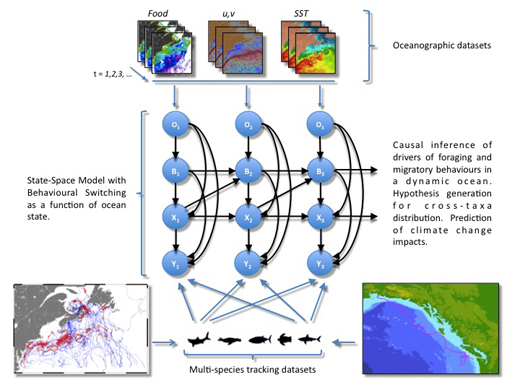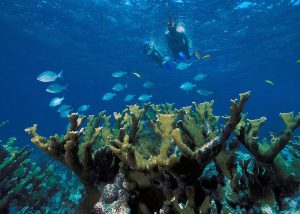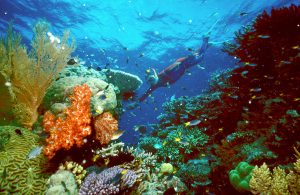Project
The goal is to synthesize the movement behaviour and dynamic patterns of spatial distribution of vertebrate predators in the ocean over time scales ranging from days to years. We will integrate oceanographic information with electronic tracking data to understand how marine predators interact with their environment and to predict how environmental change may affect these interactions. In addition to gaining mechanistic knowledge of movement behaviours and patterns, we will create maps of species’ seasonal distributions, inferred from the tracking data.

Integration of oceanographic information into state-space analysis of marine predator movement. State-space estimates of true but unobservable locations (X) are derived from locations observed (Y) via electronic tracking data. Hidden behaviours (B), eg foraging versus migrating, are estimated as a function of the locations and ocean state variables (S). This approach allows for: (1) causal inference of drivers of foraging and migratory behaviours in a dynamic ocean; (2) hypothesis generation for cross-taxa behaviours and distribution; (3) prediction of future climate change impacts.



